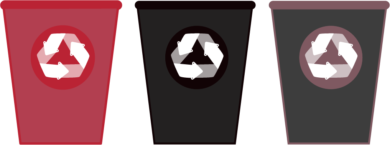As a waste processing or recycling facility, most decisions come down to cost and efficiency. Are your technicians, equipment, and operations providing the best results at the lowest cost? This all boils down to how to totally process multiple materials — from collection to final transport — in the fastest possible manner. To do so, most facilities use multi- or dual-stream processing, which requires pre-sorting by consumers or the use of multiple equipment processes.
But what if there was a better way to sort products, and what if it could actually save you money? Enter single stream.
Benefits of Single Stream
As technology advances, the capabilities of single stream equipment are surpassing other, less up-to-date options. This is especially true when using equipment that sorts by material size or quality. For companies that offer services like recycling or waste sorting, pre-sorting and careful consideration of the materials are critical to prevent extensive machine downtime or contamination. With advanced single stream equipment, however, that may be a thing of the past.
Material Variety Made Easy
Dual-stream processing has been one of the most common forms of sorting in recent years, thanks to the ability to have fibers and containers separated. However, this requires consumer pre-sorting, which isn’t always accurate and can reduce interest in a facility’s services. Dual-stream processors may also not have the same rod deck screens and vibratory features that new single stream options do, which can result in equipment jamming or material cross-contamination.
With single stream, material variety is taken into account in the design and each component is capable of more accurate, automatic sorting.
Simplified Collection Practices
Single stream merely requires collecting materials in a collection truck. Once collected, the truck takes the materials to your processing site and the single stream system then conveys, screens, and separates the waste stream to produce the cleanest commodities possible. Compared to dual-stream, where multiple collection bins and trucks are needed to prevent contamination, single stream can reduce fleet needs and collection standards.
The simplified collection also has a cost-benefit all its own; the number of bins collected decreases and consumers may be more likely to enlist collection services that do not require them to do sorting work upfront. This lowers the barrier to entry for many industries, reduces some costs, eliminates the need for extensive consumer sorting education, and increases the amount of recycled material.
Cohesive Separation Practices
Thanks to new and improved rod decks for single stream, materials that are prone to sticking or binding can be sorted easier than ever. This makes it easier for separation of collected materials to occur, while also ensuring the equipment doesn’t get jammed. In modern single stream systems offered by General Kinematics, the result is faster processing with a lowered long-term cost.
Convenience
Last but not least, single stream may be one of the most convenient ways to run your operation. Rather than spending a ton of time and resources sorting or troubleshooting a multi-stream process, you’ll be able to essentially dump and sort recycling materials, construction and demolition debris, commercial or industrial waste, and more. From the consumer to final transport, the process is made much easier through single stream.
Why Invest in Single Stream Machinery?
At the end of the day, waste processing and recycling involves more than a few moving pieces. From consumer collection needs to the size of your fleet and the equipment you maintain, there is a lot to consider. Single stream can have a positive impact on all of the moving pieces in your facility, however, and it can reduce costs through improved consumer buy-in, higher processing volumes, better accuracy, and decreased downtime.
If you’re ready to start decreasing costs with single stream, General Kinematics is here to help.
We support facilities all over the world with our advanced vibratory classification equipment and feeder systems. To learn more about single stream options that will improve your return on investment contact us today.







